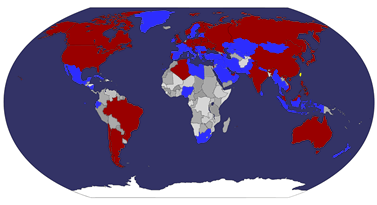Gethsemane/Gethsémani
Gethsemane (Greek ΓεΘσημανἰ, Gethsēmani Hebrew:גת שמנים, Aramaic:גת שמני, Gath-Šmânê, Assyrian ܓܕܣܡܢ, Gat Šmānê, lit. "oil press") is a garden at the foot of the Mount of Olives in Jerusalem most famous as the place where Jesus and his disciples prayed the night before Jesus' crucifixion.
Gethsemane appears in the Greek of the Gospel of Matthew and the Gospel of Mark as Γεθσημανἱ (Gethsēmani). The name is derived from the Assyrian ܓܕܣܡܢ (Gaṯ-Šmānê), meaning "oil press". Matthew (26:36) and Mark (14:32) call it χωρἰον (18:1), a place or estate. The Gospel of John says Jesus entered a garden (κῆπος) with his disciples.
According to the New Testament it was a place that Jesus and his disciples customarily visited, which allowed Judas to find him on the night of his arrest. Overlooking the garden is the Church of All Nations, also known as the Church of the Agony, built on the site of a church destroyed by the Sassanids in 614, and a Crusader church destroyed in 1219. Nearby is the Russian Orthodox Church of St. Mary Magdalene with its golden, onion-shaped domes (Byzantine/Russian style), built by Russian Tsar Alexander III in memory of his mother.
According to Luke 22:43–44, Jesus' anguish in Gethsemane was so deep that "his sweat was as it were great drops of blood falling down to the ground." According to the Eastern Orthodox Church tradition, Gethsemane is the garden where the Virgin Mary was buried and was assumed into heaven after her dormition on Mount Zion. The Garden of Gethsemane became a focal site for early Christian pilgrims. It was visited in 333 by the anonymous "Pilgrim of Bordeaux", whose Itinerarium Burdigalense is the earliest description left by a Christian traveler in the Holy Land. In his Onomasticon, Eusebius of Caesarea notes the site of Gethsemane located "at the foot of the Mount of Olives", and he adds that "the faithful were accustomed to go there to pray". Ancient olive trees growing in the garden are said to be 900 years old.
Dans la Bible, Gethsémani ou Gethsémané (en grec antique : ΓεΘσημανι, Gethsēmani, en hébreu :גת שמנים, en araméen : גת שמנא, Gat Šmānê, « le pressoir à huile ») est un lieu désignant une oliveraie au pied du mont des Oliviers, connu dans les Évangiles pour être le lieu où ont prié Jésus et les apôtres avant la Crucifixion.
Franchissant le torrent du Cédron, Jésus et ses disciples gagnèrent un jardin situé au pied du mont des Oliviers, appelé Gethsémani où sans doute il venait habituellement bivouaquer avec ses disciples. Judas, qui le savait, y conduisit ceux qui venaient l'arrêter.
« Alors Jésus parvient avec eux à un domaine appelé Gethsémani et leur dit : « Restez ici, pendant que je m'en vais là-bas pour prier. » »
— Évangile de l'apôtre Matthieu chapitre 26, verset 361
Une église a été construite au IVe siècle au bas du mont des Oliviers, par-dessus un rocher commémorant le lieu où Jésus pria, une petra qui est mentionnée dès le début de ce siècle par le Pèlerin de Bordeaux. L'endroit se trouve non loin de la grotte qui commémorait à cette époque le lieu de l'arrestation de Jésus, ceci d'après la description de la pèlerine Égérie. L'église disparut au VIIe siècle et ne fut reconstruite, à peu près sur le même plan, qu'au début du XXe siècle.
Elle se nomme la basilique de la Sainte-Agonie (surnommée l' église de Toutes-les-Nations) et appartient à la custodie franciscaine de Terre Sainte.










.jpg)























 taiwan
taiwan  cover or postcard
cover or postcard  FDC
FDC 






























































































No comments:
Post a Comment